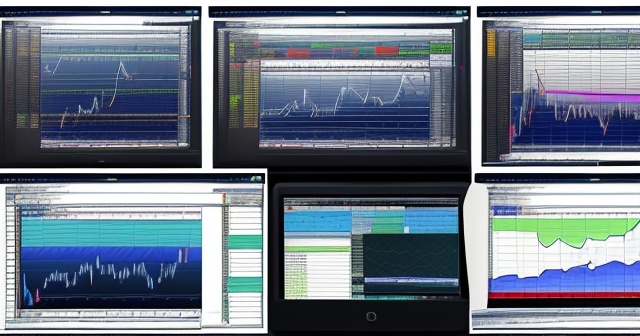
Forex Risk Management: 5 Strategies to Thrive in 2025’s Market
Table of Contents
ToggleForex Risk Management in 2025: The Shift from High Leverage to Smart Survival
The foreign exchange market, or forex, stands as the world’s largest and most dynamic financial market. With daily trading volumes often exceeding trillions of dollars, it offers unparalleled opportunities for profit. Yet, its inherent volatility and complexity also present significant risks. For many years, the allure of high leverage dominated the retail forex landscape, promising amplified gains from small capital outlays. However, as we navigate the financial currents of 2025, a fundamental shift is undeniable. The smart money, and increasingly, the savvy retail trader, is moving decisively away from the pursuit of aggressive leverage towards a profound focus on robust forex risk management. Why this transformation? Because in today’s volatile environment, capital preservation is the new competitive edge, and long-term survival hinges on controlling your exposure, not maximizing it.
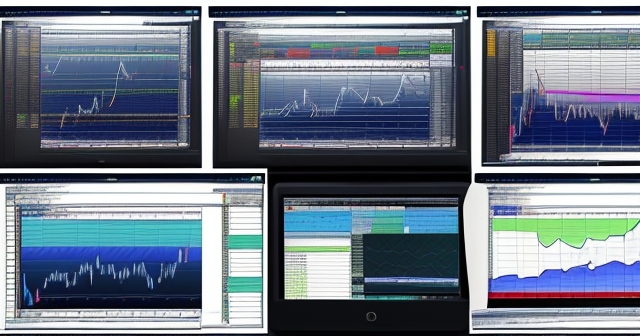
- High leverage can lead to significant profits but also substantial losses.
- Market volatility is increasingly unpredictable, making risk management crucial.
- Regulatory measures are limiting available leverage for retail traders.
The High-Leverage Illusion: Understanding the Era’s End
Let’s take a step back and look at how things used to be for many retail forex traders. The dream was simple: put down a small amount of margin and control a much larger position size, thanks to generous leverage ratios sometimes reaching 1:500 or even higher. A small favourable move in a currency pair could translate into substantial profits relative to the initial capital. It felt like a shortcut to wealth. Brokers, in turn, often promoted these high leverage options, as it encouraged more active trading and larger volumes, generating more commissions or spreads for them. This era fostered a mindset focused primarily on potential reward, often downplaying the inherent dangers of overexposure. The focus was on catching big moves, not on protecting the trading account.
However, this approach came with a hidden, often devastating, cost. The flip side of amplified gains is amplified losses. A minor adverse price movement, when combined with high leverage, could quickly erode an entire trading account. This phenomenon is known as liquidation or margin call – when your account equity falls below the required margin level, forcing the closure of positions, often at the worst possible time. Many novice traders learned this lesson the hard way, experiencing rapid and irreversible losses. The high leverage model, while exciting on paper, proved to be unsustainable for the vast majority of retail participants, leading to high failure rates and significant drawdowns.
Volatility and Regulation: The Forces Driving Change in Market Conditions
What specific factors have accelerated this shift away from high leverage towards stringent forex risk management? Two primary forces stand out: increased market volatility and tightening regulatory environments. Over the past few years, and projected to continue, global economic conditions have become significantly more unpredictable. Central banks, such as the Federal Reserve (Fed), the Bank of Japan (BoJ), and the European Central Bank (ECB), have engaged in unprecedented monetary policies, including rapid interest rate hikes and shifts in quantitative easing/tightening. These actions send ripples, or often waves, through currency markets, causing sharp, sudden price movements that are difficult to predict or hedge against with high confidence.
Consider the impact of surprise interest rate announcements or significant economic news releases. A heavily leveraged position in, say, EUR/USD, could be wiped out in minutes if unexpected data triggers a sharp, sustained move against the trade direction. This elevated level of volatility in key currency pairs has made the risks associated with high leverage simply too great for prudent trading. The margin for error has shrunk considerably. Even seemingly stable pairs can experience flash crashes or unexpected spikes due to geopolitical risks or shifts in market sentiment, turning minor losses into catastrophic ones for undercapitalized or overleveraged accounts.
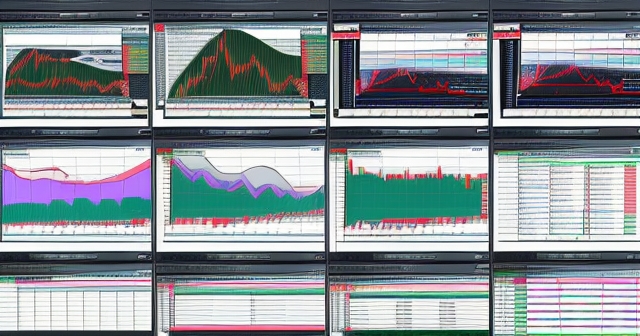
Simultaneously, regulators worldwide have recognized the inherent dangers of high leverage for retail traders. Following the lead of bodies like the European Securities and Markets Authority (ESMA), which imposed significant restrictions on retail leverage in the EU (often limiting it to 1:30 for major pairs), other jurisdictions have followed suit or are considering similar measures. These regulatory changes directly impact what brokers can offer, often defaulting new accounts to much lower leverage settings (e.g., 1:30, 1:50). This regulatory pressure, combined with the painful lessons learned from recent market volatility, has forced a collective recalibration of risk tolerance among retail traders. It’s no longer about the highest possible leverage, but the appropriate level of exposure that allows you to survive inevitable market fluctuations.
Laying the Foundation: Core Forex Risk Management Strategies
So, if high leverage is out, what foundational strategies are now paramount for effective forex risk management? It starts with embracing a disciplined, calculated approach to every single trade. Think of yourself not just as a trader, but as a financial strategist whose primary mission is to protect your valuable trading capital. Without capital, you cannot trade at all. This fundamental shift in mindset is critical. We move from “how much can I make?” to “how much can I afford to lose on this trade?”.
The bedrock of traditional risk control involves several key components. First, determining your risk per trade. A widely accepted rule of thumb is to risk no more than 1% to 2% of your total trading account capital on any single trade. This means if you have a $10,000 account, you would aim to lose no more than $100 to $200 on one position should it move against you. Why so little? Because even with a reasonable winning rate, a series of consecutive losses (which are inevitable) can quickly decimate an account if risk per trade is too high. Risking 10% or more means just a few losing trades can put you out of the game entirely. Sticking to a small, fixed percentage loss per trade is a simple yet incredibly powerful principle for ensuring longevity in the markets.
Second, implementing stop-loss orders is non-negotiable. A stop-loss is an automated order placed with your broker to close a position when it reaches a specific unfavorable price level. It acts as your predefined exit strategy for a losing trade, guaranteeing that your loss does not exceed your planned risk limit for that trade. Many traders make the critical mistake of not using stop-losses or, worse, moving them further away from their entry point when a trade goes against them in the hope it will turn around. This is often a recipe for disaster, turning small, manageable losses into large, account-threatening ones. A stop-loss must be placed based on technical analysis or strategy logic *before* you enter the trade and adhered to with discipline.
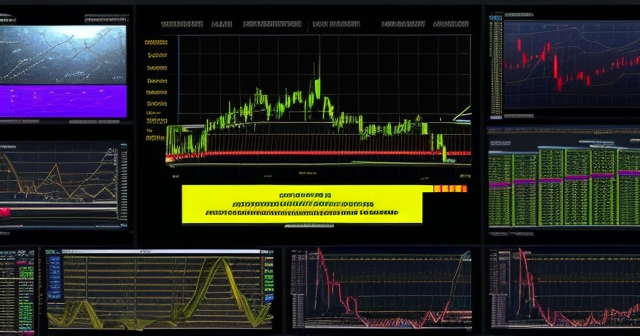
Third, mastering position sizing is crucial. This is the calculation that tells you exactly how many units or lots of a currency pair you should trade based on your predetermined risk per trade percentage, the distance between your entry price and your stop-loss price, and the current market price of the currency pair. It’s not a fixed number; it varies based on the volatility of the pair and the specifics of your trade setup. For example, if you have a tight stop-loss (small distance from entry), you can afford a larger position size while staying within your 1-2% risk limit. Conversely, if your stop-loss is wide (large distance), you must use a smaller position size to limit the potential dollar loss to your acceptable percentage. Proper position sizing is the direct application of your risk management rules to each individual trade and is significantly more important than focusing solely on directional prediction.
Precision in Execution: Mastering Stop-Loss Orders and Position Sizing
Let’s delve a bit deeper into the mechanics of stop-loss orders and position sizing, as these are the practical tools that translate your risk management philosophy into action. A static stop-loss is the most common type, set at a fixed price level. Once placed, it typically remains at that level unless manually adjusted (which should be done with caution, only moving it to lock in profit, not increase potential loss). However, another valuable tool is the trailing stop. A trailing stop is a dynamic stop-loss that moves along with a profitable trade. It is set at a specific distance (in pips or percentage) below the current market price for a long position, or above it for a short position. As the market moves favorably, the trailing stop moves with it, maintaining the same distance. If the market price then reverses and hits the trailing stop level, the trade is closed, locking in a portion of the accumulated profit while still limiting potential losses if the reversal happens early.
Choosing the correct location for your stop-loss is not arbitrary. It should be placed at a logical level where, if the price reaches it, your original trading premise is invalidated. This might be below a recent swing low in an uptrend, above a swing high in a downtrend, beyond a key support or resistance level, or based on volatility indicators like Average True Range (ATR). The distance of this stop-loss from your entry point directly impacts your position sizing calculation.
Understanding position sizing is perhaps the single most critical mathematical aspect of forex risk management. It involves a few steps:
- Determine your account size.
- Decide your maximum risk percentage per trade (e.g., 1%).
- Calculate the maximum dollar amount you are willing to lose ($ Account Size * Risk Percentage).
- Determine the distance in pips between your proposed entry price and your stop-loss price.
- Calculate the value of one pip for the currency pair you are trading with a standard lot (100,000 units), mini lot (10,000 units), or micro lot (1,000 units) size. Note that pip values can vary depending on the quote currency and your account currency.
- Calculate the required position size in units using the formula: (Maximum Dollar Risk) / (Stop Loss distance in Pips * Pip Value per Unit).
| Step | Description |
|---|---|
| 1 | Determine your account size. |
| 2 | Decide your maximum risk percentage per trade (e.g., 1%). |
| 3 | Calculate the maximum dollar amount you are willing to lose. |
| 4 | Determine the distance in pips between your proposed entry price and your stop-loss price. |
| 5 | Calculate the value of one pip for the currency pair. |
| 6 | Calculate the required position size in units. |
This calculation ensures that regardless of the stop-loss distance, your actual dollar risk remains constant at your desired percentage of capital. Many online calculators and tools within trading platforms like MT4 or MT5 can assist with this calculation, making it more accessible for traders. Ignoring proper position sizing is akin to driving blindfolded; you might get lucky for a while, but a crash is almost inevitable.
If you’re navigating the complexities of various financial instruments and perfecting your position sizing techniques, finding a platform that supports these calculations and offers a range of tools is essential. In choosing a trading platform, Moneta Markets‘s flexibility with MT4, MT5, and Pro Trader platforms, combined with features supporting precise execution and risk assessment, makes it a valuable consideration for both novice and experienced traders.
Building Resilience: Beyond the Single Trade
Effective forex risk management extends far beyond managing individual trades with stop-losses and position sizing. It’s about building a resilient overall approach to the market. One crucial element is developing and rigorously adhering to a detailed trading plan. This plan should outline your trading strategy, including the specific conditions under which you will enter and exit trades, the currency pairs you will focus on, your maximum daily or weekly drawdown limits, your procedures for analyzing market conditions, and crucially, your specific rules for risk management (e.g., risk percentage per trade, maximum open trades, total exposure limits). A trading plan removes guesswork and emotional decision-making, providing a clear roadmap to follow, even when faced with tempting opportunities or frustrating losses. Think of it as your personal constitution for trading; violate it at your peril.
Diversification is another key aspect of building resilience. While the forex market is primarily focused on currencies, trading multiple, uncorrelated currency pairs can help spread risk. If your strategy performs poorly on one pair due to specific market conditions, performance on other pairs might balance it out. Avoid concentrating all your capital and trading activity on just one or two pairs, especially if they are highly correlated. Understanding the correlation between different currency pairs is vital for effective diversification.
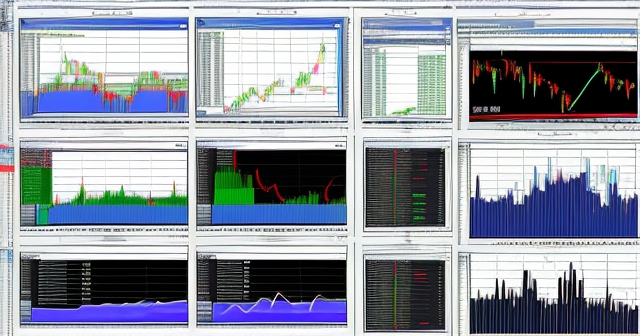
Staying informed about economic events and market news is also part of proactive risk management. While you don’t need to be a full-time economist, being aware of scheduled high-impact news releases (like central bank meetings, inflation data, employment reports) is essential. These events are known catalysts for significant volatility and can dramatically impact currency prices in unpredictable ways. You may choose to avoid trading entirely around such events or adjust your position sizing and stop-loss placement accordingly. Ignoring market news is trading blind; you need to understand the potential macroeconomic forces influencing the pairs you trade.
Practice, particularly with demo accounts, is an often-underestimated component of preparation and risk reduction. Before risking real capital, you should test your trading strategy and risk management rules extensively on a demo account that simulates real market conditions. This allows you to refine your approach, become comfortable with your platform, and build confidence without the fear of losing money. It’s a vital proving ground. Additionally, consistently reviewing your past trades – both winners and losers – is critical for identifying patterns, mistakes, and areas for improvement in your strategy and risk control implementation. This reflective practice is key to continuous growth as a trader.
Emotional Mastery: The Underrated Pillar of Survival
Perhaps the most challenging, yet utterly vital, aspect of forex risk management is mastering your emotions. The forex market is a breeding ground for fear and greed, two powerful forces that can quickly derail even the best-laid plans. Fear can cause you to exit profitable trades too early, missing out on significant gains, or conversely, to hesitate in pulling the trigger on a valid trade setup, leading to missed opportunities. Greed, on the other hand, can tempt you to take on excessive leverage, widen your stop-losses, or overtrade in pursuit of bigger profits, ultimately exposing you to unacceptable levels of risk.
Many common risk management mistakes are rooted in emotional decisions:
- Removing or widening a stop-loss because you don’t want to take a small loss.
- Increasing position size after a winning streak due to overconfidence.
- Trading larger amounts to try and recoup losses quickly (revenge trading).
- Entering trades impulsively based on market noise or tips without a valid setup.
- Holding onto losing positions for too long hoping they will recover.
These are all manifestations of letting emotions dictate trading actions rather than sticking to your disciplined trading plan and risk management rules.
Mastering emotions isn’t about eliminating them entirely – that’s impossible. It’s about recognizing them, understanding how they can influence your trading, and developing strategies to mitigate their impact. This includes strictly adhering to your predetermined risk per trade limits, using automation tools like stop-losses to take decisions out of your hands, taking breaks after losing trades, avoiding overtrading, and practicing mindfulness or stress-reduction techniques. Building emotional resilience is a journey, not a destination, but it is absolutely necessary for consistent success and long-term survival in the volatile world of forex trading. Your trading plan and risk management rules act as a logical counterweight to your emotional impulses.
AI in Forex Risk Management: Opportunities and Challenges
As technology advances, so do the tools available to traders. Artificial Intelligence (AI) is rapidly emerging as a potential game-changer in enhancing forex risk management. While still evolving, AI offers capabilities that can complement and even surpass traditional methods, particularly in processing vast amounts of data and identifying complex patterns that are invisible to the human eye.
How can AI contribute to better risk control?
- Real-time Data Analysis: AI systems can process incredible volumes of market data, news feeds, social media sentiment, and historical price movements simultaneously. This allows for a more holistic and immediate assessment of market conditions than manual analysis.
- Volatility Forecasting: AI algorithms can be trained to recognize patterns and indicators that often precede periods of high volatility. This predictive capability allows traders to adjust their position sizing, stop-loss placement, or even choose to sit out during potentially turbulent times.
- Sentiment Analysis: AI can analyze news headlines, social media posts, and other textual data sources to gauge overall market sentiment towards a specific currency pair or economic event. Understanding prevailing sentiment can provide early warnings of potential shifts or reinforce existing trade biases, helping assess the overall risk profile of a potential trade.
- Dynamic Stop-Loss Suggestions: Beyond static or simple trailing stops, AI could potentially suggest or manage dynamic stop-loss levels that adjust automatically based on changing market volatility and price action, providing a more nuanced approach to trade protection.
- Automated Diversification Assistance: AI can analyze correlations between various currency pairs and suggest optimal portfolio diversification strategies to minimize overall portfolio risk based on current market dynamics.
- Identifying Hidden Risks: By analyzing trading behavior and market data, AI might identify subtle risk exposures or patterns of overtrading that a human trader might miss, providing valuable feedback for improving personal risk management habits.
However, it’s crucial to approach AI in trading with a degree of caution. AI is a powerful tool, but it’s not a magic bullet. Challenges include:
- Data Quality: AI is only as good as the data it’s trained on. Inaccurate or incomplete data can lead to flawed analysis and poor risk assessments.
- System Complexity: Understanding how complex AI models arrive at their conclusions can be challenging (the “black box” problem), making it difficult to trust or troubleshoot when things go wrong.
- Over-Reliance: There’s a risk of becoming overly dependent on AI suggestions, neglecting human judgment and the ability to adapt to truly novel market events that the AI hasn’t been trained on.
- Cost and Accessibility: Sophisticated AI tools for retail traders are still relatively nascent and may be expensive or complex to implement.
Ultimately, AI should be seen as a tool to *enhance* human forex risk management, not replace it entirely. Combining AI-driven insights with your own understanding, strategy, and discipline is likely the most effective path forward.
Brokers as Allies: Tools and Support for Risk Control
In response to regulatory pressures and the evolving needs of risk-aware traders, many reputable brokers are increasingly acting as allies in the pursuit of better forex risk management. As mentioned earlier, a significant change is the shift towards offering lower default leverage options. While high leverage might still be available upon request for certain account types or experienced traders, brokers are educating clients about the risks and encouraging more conservative settings (e.g., 1:30, 1:50). This subtle but important change nudges new traders towards a safer starting point.
Furthermore, brokers are improving the risk management tools available within their trading platforms. You’ll increasingly find features that allow you to:
- Easily calculate required margin and potential profit/loss before placing a trade.
- Visualize the potential impact of your stop-loss and take-profit orders on your account equity.
- Receive warnings when attempting to open positions that involve excessive leverage or risk relative to your account size.
- Access detailed reports on your past trading performance, including crucial metrics like maximum drawdown, average winning/losing trade size, and risk-adjusted returns. These reports are invaluable for identifying areas where your risk management might be falling short.

Some brokers also offer educational resources focused on risk management, providing webinars, articles, and guides on topics like position sizing, using stop-losses, and developing a trading plan. They understand that traders who manage risk effectively are more likely to survive and become long-term, profitable clients. Partnering with a broker that prioritizes transparency, provides robust trading platforms with essential risk tools, and operates under strong regulatory oversight is a critical decision for any trader serious about sustainable success.
If you’re seeking a brokerage that not only offers essential trading platforms but also provides a framework for secure and risk-aware trading, consider Moneta Markets. Holding licenses from reputable regulatory bodies like FSCA, ASIC, and FSA, they offer features designed to enhance trader confidence, such as segregated client funds, free VPS services for reliable execution, and multilingual customer support available 24/7, complementing your risk management efforts.
The Future is Risk-Aware: Your Path to Long-Term Survival
The message is clear: in the current, highly dynamic forex market, survival is the new edge. The days of relying on excessive leverage and hoping for the best are fading. The future belongs to the risk-aware trader – the one who prioritizes protecting capital above chasing unrealistic gains. This means internalizing the principles we’ve discussed and making them non-negotiable components of your daily trading routine.
It requires discipline to consistently use stop-loss orders on every trade, even when it feels like the market “just needs to go a little further” to turn around. It demands patience to calculate proper position sizing for each setup, resisting the urge to trade larger volumes just because you feel confident. It needs commitment to develop and stick to a comprehensive trading plan, avoiding impulsive decisions driven by fear or greed. It calls for humility to continuously review your performance, acknowledge mistakes, and adapt your strategies based on what the market is telling you.
Embracing this risk-aware mindset isn’t just about avoiding losses; it’s about setting yourself up for long-term consistency and eventual profitability. By controlling your risk per trade, you limit the depth of potential drawdowns, making it easier to recover from losing periods. By managing your overall exposure, you prevent single events from wiping out your account. By using tools like stop-losses and proper position sizing, you bring structure and control to an otherwise chaotic environment. Think of forex risk management not as a barrier to profit, but as the essential foundation upon which sustainable profit is built.
While AI tools offer exciting possibilities for enhancing risk assessment, remember that human intelligence, discipline, and emotional control remain indispensable. AI can process data and identify patterns, but it’s *your* adherence to a disciplined plan and *your* ability to manage your psychological responses to winning and losing that will ultimately determine your success. The most successful traders are not those who avoid losses entirely (that’s impossible), but those who manage their losses effectively, allowing their winning trades (when they occur) to outweigh the losing ones over time, leading to positive risk-adjusted returns.
Exploring the full spectrum of financial instruments can also be part of a diversified, risk-managed approach. Beyond major and minor currency pairs, many platforms offer CFDs on indices, commodities, and cryptocurrencies. If you’re looking to diversify your exposure across different asset classes as part of your broader risk management strategy, Moneta Markets provides access to over 1000 instruments, allowing you to build a portfolio that aligns with your risk tolerance and trading objectives under one roof.
Conclusion: Embracing the Risk-Managed Mindset
In summary, the retail forex market is undergoing a significant and necessary evolution. The era defined by the aggressive pursuit of amplified gains through excessive leverage is giving way to a more mature, disciplined approach centered on robust forex risk management. Increased market volatility, driven by factors like central bank actions and global economic uncertainty, coupled with tightening regulatory restrictions on leverage, have made the traditional high-risk approach unsustainable for most traders.
The path to long-term survival and success in this environment lies in mastering the core pillars of risk control: setting strict risk limits per trade, diligently using stop-loss orders, calculating and applying proper position sizing based on capital and stop distance, developing and adhering to a comprehensive trading plan, diversifying exposure, staying informed about market-moving events, practicing diligently, and critically, achieving mastery over your trading emotions. While emerging technologies like AI offer promising avenues for enhancing risk assessment and analysis, they are best utilized as tools to augment, not replace, human discipline and decision-making.
Successful traders in 2025 and beyond will be those who treat risk management not as an afterthought, but as the absolute cornerstone of their trading strategy. They understand that protecting their capital is the prerequisite for making profits. They are patient, disciplined, and adaptable. They recognize that the true edge in forex trading is not found in chasing the highest leverage, but in consistently and effectively controlling their exposure to the market’s inherent uncertainties. By embracing a risk-managed mindset, you equip yourself with the resilience needed to navigate the inevitable storms and position yourself for sustainable success in the dynamic world of forex.
forex risk managementFAQ
Q:What is forex risk management?
A:Forex risk management involves strategies and techniques designed to minimize potential losses and maximize potential profits when trading in the forex market.
Q:Why is capital preservation important in forex trading?
A:Capital preservation is vital as it ensures a trader can continue to operate in the market, learn from past experiences, and ultimately become a profitable trader.
Q:How can I effectively use stop-loss orders?
A:Effective use of stop-loss orders involves setting them at logical levels to limit potential losses based on market data and the specific strategy you are implementing.
You may also like
Calendar
| 一 | 二 | 三 | 四 | 五 | 六 | 日 |
|---|---|---|---|---|---|---|
| 1 | 2 | 3 | 4 | 5 | 6 | 7 |
| 8 | 9 | 10 | 11 | 12 | 13 | 14 |
| 15 | 16 | 17 | 18 | 19 | 20 | 21 |
| 22 | 23 | 24 | 25 | 26 | 27 | 28 |
| 29 | 30 | 31 | ||||
發佈留言
很抱歉,必須登入網站才能發佈留言。